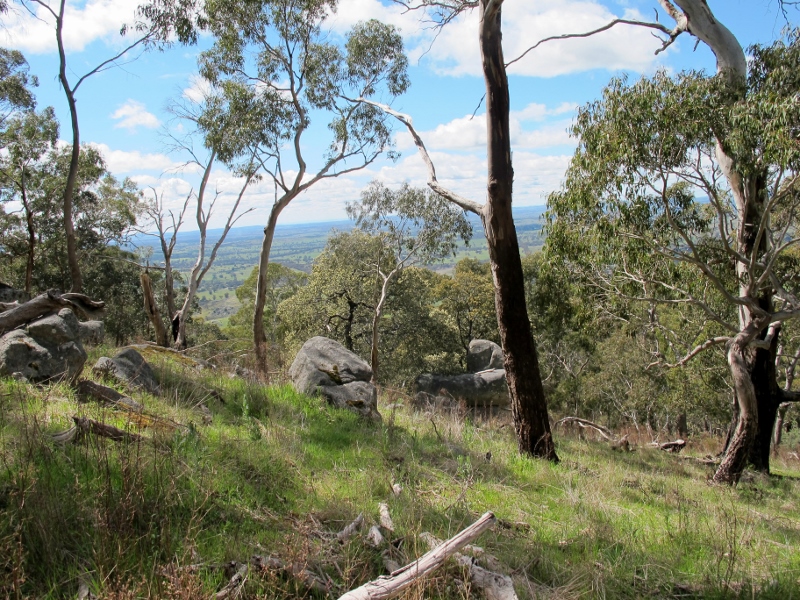The idea of ‘land restoration’ suggests that the land can be restored to a better condition than the one it’s now in. The question is, what qualities might that ‘better condition’ have?
For a partial answer to that question for our region, have a look at Forgotten Woodlands, Future Landscapes, on Ian Lunt’s ecology blog. Using a number of resources, including the 1852 Selwyn map, Lunt points out that in the early 19th century Silver Banksias and Casuarinas were far more common than they are now, and that their destruction has severely impoverished our treescape. What’s more, their disappearance has led to a severe decline in some bird species.

Mount Alexander: its granite ridges were once covered with a variety of trees, especially Banksias and Casuarinas.
The Selwyn map recorded the ridges of Mount Alexander, for example, as covered with ‘sheoak, gum box and honeysuckle [ie, Banksia]’. An 1875 geology report observed that Casuarinas and Banksias were ‘especially characteristic’ of higher granite ridges in Victoria.
Now, a single banksia survives on the Mount, and casuarinas are uncommon in our bushlands.
If you want to find out why, this provocatively interesting article is a must read. You can find the Selwyn Map via our March 2013 post.




 Click on image for info/order page
Click on image for info/order page Click on image for info/order page
Click on image for info/order page Click on image for info/order page
Click on image for info/order page





















Castlemaine Landcare Group started to plant Banksia marginata along the Happy Valley walking track a number of years ago. We utilised silt extracted from Forest Creek during willow removal to assist in planting – they benefit from moister conditions in their early years of growth. The initial planting is now well established and we planted more on a nearby site this winter.
We live half an hour south of Castlemaine. We have established a seed production area [SPA] for a range of species in order to supply seed to a range of people (indigenous nurseries and private) in order to reduce the amount of seed being taken from the natural environment. We collected seed from 5 different populations of the Tree form of Silver Banksia and we now have over 300 plants in our SPA and we are collecting heaps of seed. We have to separately bag the cones with cloth bags or the beautiful Yellow-tailed Black-cockatoos take them all before they are ripe.
The local nursery tells us that our seed grows faster and better and grows lovely plants compared to all the others they have grown. We would like more people to grow our seed and include it in their plantings as it may help people to form more sustainable populations over time.
We went to so much trouble because we want to see this species returned to all the areas where it used to be (we make very little money from our seed – this is not our motivation). Our seed is from Baynton and Tooborac and Spring Hill and we grow them on a property near Daylesford on mostly red volcanic soil. If you have time to look at our website: http://www.victoriannativeseed.com.au/ you can see what we are doing.